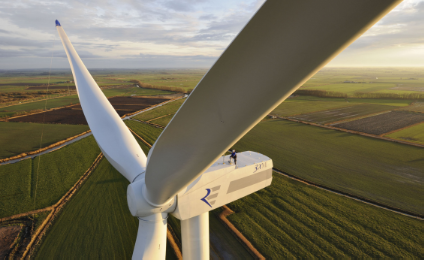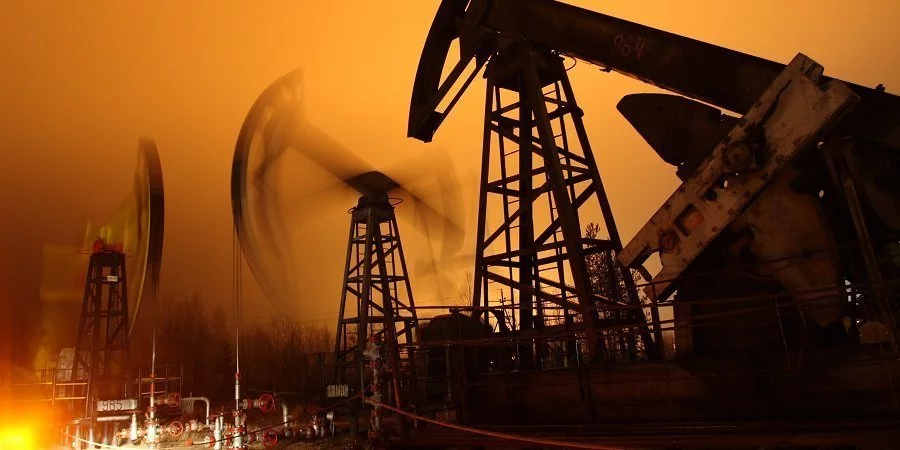Same for all
The globalization of markets, including energy, has become the leading trend of the 21st century. Thanks to the development of technology, transport, communications, local and regional oil and gas markets are increasingly removing borders. At the same time, international cooperation is increasing: complex oil and gas projects, as a rule, require a large number of participants, often from different countries.
At the same time, competition between the oil and gas producing countries is getting tougher. Over the past two decades, Russia has been cultivating its traditional sales markets, and is also fighting for new ones — primarily China and other Asia-Pacific countries.
Two powerful pipelines were built to supply oil and gas to the Celestial Empire: ESPO and Power of Siberia. At the same time, gas transmission capacities in the western direction were increased (Nord Stream and subsequent Gazprom projects). New oil loading terminals (Ust-Luga, Kozmino and others) were built. Russian Gazprom and NOVATEK began to produce and supply liquefied natural gas (LNG) to international markets.
An important challenge was the American "Shale Revolution", which turned the United States from an exporter into a net importer of gas and seriously redefined the energy market. Consumer countries got the opportunity to conclude contracts on more favorable terms (which is not in Gazprom’s favor), spot trading volumes of “blue fuel” began to grow.
In the competition between hydrocarbon suppliers, tough measures are used: price wars, sanctions and restrictions. Thus, the sanctions of the United States and the EU introduced in 2014 limited the access of Russian oil and gas companies to Western technologies and capital markets and, as a result, undermined a number of important projects for the Russian Federation - in particular, on the development of the Arctic shelf.
A positive point: sanctions stimulate Russian companies and their partners to develop their technologies, equipment, and software. If this problem is successfully solved, Russia in the global energy market will also be able to assume the role of leading source of innovation, and not just supplier of raw materials.
Globalization also strengthens the dependence of all its participants on each other and does have many threats in common. The most striking example is the COVID-19 pandemic, which resulted world oil and gas consumption in a “free fall," the consequences of which are not yet entirely predictable.
The Age of Hard Recoverable Oil
Domestically, Russian oil and gas industry faced a reduced availability. According to the estimates of the Ministry of Energy, Russia will have enough oil for at least 30 years, and gas for 50 years. But at the same time, the raw material base, mainly for oil, is deteriorating.
In the key region for the domestic "oil industry" - Western Siberia in 2008-2018 production dropped by 10%, although drilling meterage grew. Over the past ten years, the production rate of new wells in the region dropped by an average of 34%, and watering increased from 33% to 50% (data from the Ministry of Energy).
For new reserves, oil companies have to move to uninhabited regions with extremely harsh climates in the north and east of the country. Until 2014, high hopes were pinned on offshore production, including in the Arctic, but drop in oil prices and sanctions forced to push a number of planned projects "to the back of the drawer". Production in the Arctic is conducted only at the Gazprom Neft Prirazlomnoye field.
However, production continues on three offshore projects off the coast of Sakhalin. There are major new discoveries: the Neptune and Triton fields of Gazprom Neft in the Sea of Okhotsk, and the Pobeda of Rosneft in Kara Sea. LUKOIL operates in the Baltic and the Caspian Sea.
A certain "margin of safety" is retained by traditional areas of oil production. Oil workers are trying to support oil production by increasing oil recovery at Brownfields, introducing the remaining deposits, as well as engaging in the development of unconventional reserves: the Bazhenov and Tyumen Formations, the Achim deposit, and bitumen oil. This gives a definite result. So, in the Khanty-Mansi Autonomous Area-Yugra (42% of Russian oil production in 2019), over the past two years they have managed to stabilize oil production at the level of 235-236 million tons.
Hard-to-recover reserves (TRIZ) should be mentioned separately. According to estimates by the Ministry of Energy, the share of such in the overall structure of oil reserves reaches 65%. At the same time, production from unconventional deposits is growing all over the world, and it is another important industry trend. In Russia, TRIZ accounts for about 7% of production, but the largest companies are working on technologies that will increase production.
A special focus is on the search for cost-effective ways to develop the Bazhenov Formation; the extraction of this oil could give a “second wind” to Western Siberia. Forecasts estimate the geological reserves of Bazhen as huge - 18-60 billion tons. Gazprom Neft promises to achieve profitable production next year. To date, the cost of producing a ton of Bazhenov oil has been reduced to 16 thousand rubles per tonne compared to 30 thousand rubles per tonne in 2017
New technologies for extracting oil
It has become possible to implement many complex upstream projects through the introduction of advanced technologies. A special role in the last decade in production has been played by horizontal drilling and hydraulic fracturing. Both technologies were borrowed in the West, although similar operations were carried out in the USSR.
According to last year's Deloitte study, in 2013-2018 the share of horizontal drilling in the Russian oil industry grew from 21% to 48%. Further growth is projected for the future.
Today, oil workers are building technologically sophisticated wells with two or more completions, including fishbone-type wells. For the shelf, wells are drilled with an extra-long deviation from the vertical, allowing underwater production from the shore. Hydraulic fracturing is being used more and more often, although seven years ago, President Vladimir Putin called hydraulic fracturing “a rather barbaric way” - because of environmental damage. High-speed and high-volume hydraulic fracturing operations, multi-stage (up to 30 stages) are under way, and the technology of repeated multi-fracturing is being developed.
Hydraulic fracturing (usually in combination with horizontal drilling) is actively used to increase oil recovery, as well as the development of unconventional deposits of the Achimov strata, the Tyumen and Bazhenov Formations. At the same time, oil and gas and service companies form their own approaches. The most effective compositions of fluids, reagents, and cements are being selected; new samples of domestic drilling equipment, etc. are being developed.
Intellectualization and digitalization
The last decade in the domestic oil and gas industry has been marked by the active introduction of «smart» technologies. Drilling and exploitation of the same multilateral or ultra-long horizontal wells would not have been possible without high-tech equipment, numerous sensors, and specialized software that continuously collects and interprets data.
The first intellectual wells in Russia were built in the second half of the “zero”. On the shelves and in inaccessible areas, several “smart” fields have been launched, equipped with minimal manning or automated technologies.
Digital technologies are widely available throughout the oil and gas industry - from exploration to marketing. “Digital” shows high efficiency in geological exploration (for example, Gazprom Net, based on the results of digital processing of geodetic, has found new hydrocarbon reservoirs in Vyngapur). Actively promoting automation, and now digital technology are used in oil processing. Advanced technologies are “entrusted” with safety control, selection of the optimal operating mode of equipment, etc. The protection of pipelines and other objects is increasingly entrusted to drones and special systems. In the field of marketing, electronic services are being developed for company customers.
The next step is the transition from selected “smart” technologies to full-scale digitalization of companies “from the well to the gas nozzle”, and then the whole industry. It is believed that digitalization will increase the efficiency of production processes, allow a more flexible and faster response to market requirements, and, ultimately, reduce the costs of companies. In addition, digitalization will increase the transparency and manageability of the industry. However, this will require companies to transform their entire business.
LNG Growth

The main factor dividing the gas market again is the global growth in LNG production and trade. According to BP, in 2018, 11% of global gas production was already directed to liquefaction. The Russian Ministry of Energy expects that by 2025 the share of LNG in the total trade in “blue fuel” will increase to 51%, and by 2040 - to 70%, as a result of which the world gas market will become globalized.
Today, market leaders are Qatar, Australia, Norway, Canada, Russia and the United States. So far, the Russian Federation has two large-capacity gas liquefaction plants - a plant under the Sakhalin-2 project (controlled by Gazprom) and Yamal LNG (NOVATEK).
In the next 15 years, to become one of the three leaders in LNG supplies is the task set for Russian companies. “One of the goals of the energy strategy is to develop LNG production and increase Russia's share in world markets from 8% to 15-20%. Our capacities already reach 30 million tons, by 2035 we can already reach production from 80 to 140 million tons per year,”said Russian Minister of Energy Alexander Novak on the air of Russia 24 channel in early April.
This will be possible after the launch of new plants that are going to build "NOVATEK", "Gazprom" and "Rosneft". NOVATEK is the closest to the implementation of Arctic LNG-2.
It is important that companies will work on Russian liquefaction technologies (existing plants operate on Western ones).
According to last year’s forecast by the Center for Strategic and International Studies in Washington, Russia has every chance in ten years to become one of the three leaders in gas liquefaction. However, the Americans believe that Qatar and the USA will be ahead of it.
According to last year’s forecast by the Center for Strategic and International Studies in Washington, Russia has every chance in ten years to become one of the three leaders in gas liquefaction. However, the Americans believe that Qatar and the USA will still remain ahead.
«Green» future
In parallel with the depletion of hydrocarbon reserves in the world, the trend towards the use of environmentally friendly fuels of renewable energy sources (RES) is intensifying.
So far, oil has a leading share in the overall structure of global energy demand with a share of 31.5%, and for gas - 23%. According to forecasts by the IEA and OPEC, in 2040 oil and gas will be the main types of fuel.
The share of new energy sources (sun, wind, biomass and water, not counting the generation of hydroelectric power stations) in the global energy balance is still calculated in units of percent, but many forecasts indicate future growth. Thus, the IEA believes that the total capacity of alternative energy carriers in the world will increase by 50% by 2024
Preparing in advance for the end of the "oil" era, the largest oil and gas companies in the world in recent years have been increasing investments in alternative energy. First of all, these are the European Shell, Total, ENI, BP and Equinor (the latter abandoned its former name Statoil largely due to the “change of course”). By 2030, investments in renewable energy can take up to 20% of the total investment of the world's largest oil and gas companies, predicts KPMG.
Russian players are also involved in renewable energy, but so far not particularly active. Most often we are talking about the use of solar panels and wind turbines for energy supply of company facilities. The largest projects are located abroad. So, LUKOIL owns several photo and wind-operated power plants in Romania and Bulgaria. The company’s website explains that they are using “favorable conditions in countries where the state provides support in this area”.

Author:
Irina Gerasimova



